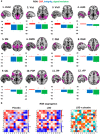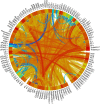Modern Clinical Research on LSD
- PMID: 28447622
- PMCID: PMC5603820
- DOI: 10.1038/npp.2017.86
Modern Clinical Research on LSD
Abstract
All modern clinical studies using the classic hallucinogen lysergic acid diethylamide (LSD) in healthy subjects or patients in the last 25 years are reviewed herein. There were five recent studies in healthy participants and one in patients. In a controlled setting, LSD acutely induced bliss, audiovisual synesthesia, altered meaning of perceptions, derealization, depersonalization, and mystical experiences. These subjective effects of LSD were mediated by the 5-HT2A receptor. LSD increased feelings of closeness to others, openness, trust, and suggestibility. LSD impaired the recognition of sad and fearful faces, reduced left amygdala reactivity to fearful faces, and enhanced emotional empathy. LSD increased the emotional response to music and the meaning of music. LSD acutely produced deficits in sensorimotor gating, similar to observations in schizophrenia. LSD had weak autonomic stimulant effects and elevated plasma cortisol, prolactin, and oxytocin levels. Resting-state functional magnetic resonance studies showed that LSD acutely reduced the integrity of functional brain networks and increased connectivity between networks that normally are more dissociated. LSD increased functional thalamocortical connectivity and functional connectivity of the primary visual cortex with other brain areas. The latter effect was correlated with subjective hallucinations. LSD acutely induced global increases in brain entropy that were associated with greater trait openness 14 days later. In patients with anxiety associated with life-threatening disease, anxiety was reduced for 2 months after two doses of LSD. In medical settings, no complications of LSD administration were observed. These data should contribute to further investigations of the therapeutic potential of LSD in psychiatry.
Figures




References
-
- Baggott MJ, Coyle JR, Erowid E, Erowid F, Robertson LC (2011). Abnormal visual experiences in individuals with histories of hallucinogen use: a Web-based questionnaire. Drug Alcohol Depend 114: 61–67. - PubMed
-
- Belleville RE, Fraser HF, Isbell H, Wikler A, Logan CR (1956). Studies on lysergic acid diethylamide (LSD-25): I. Effects in former morphine addicts and development of tolerance during chronic intoxication. AMA Arch Neurol Psychiatry 76: 468–478. - PubMed
-
- Bogenschutz MP, Forcehimes AA, Pommy JA, Wilcox CE, Barbosa PC, Strassman RJ (2015). Psilocybin-assisted treatment for alcohol dependence: a proof-of-concept study. J Psychopharmacol 29: 289–299. - PubMed
-
- Carhart-Harris RL, Bolstridge M, Rucker J, Day CM, Erritzoe D, Kaelen M et al (2016. a). Psilocybin with psychological support for treatment-resistant depression: an open-label feasibility study. Lancet Psychiatry 3: 619–627. - PubMed
Publication types
MeSH terms
Substances
LinkOut - more resources
Full Text Sources
Other Literature Sources
Medical

